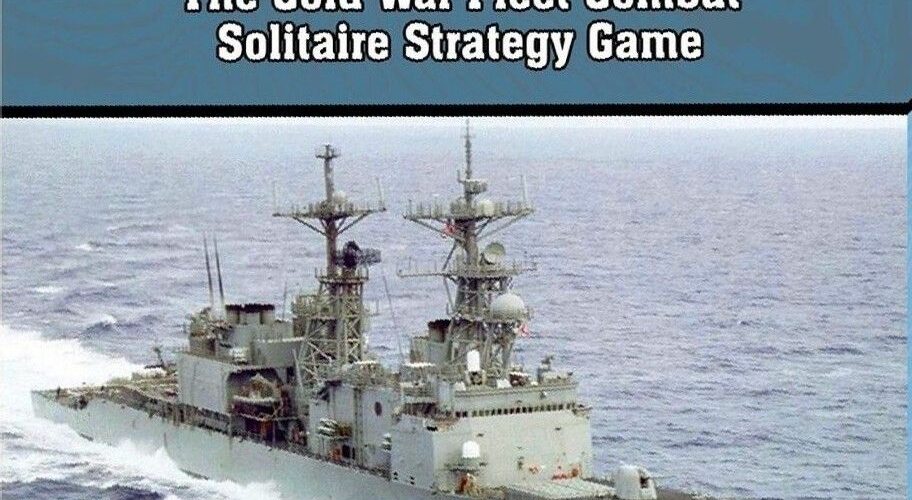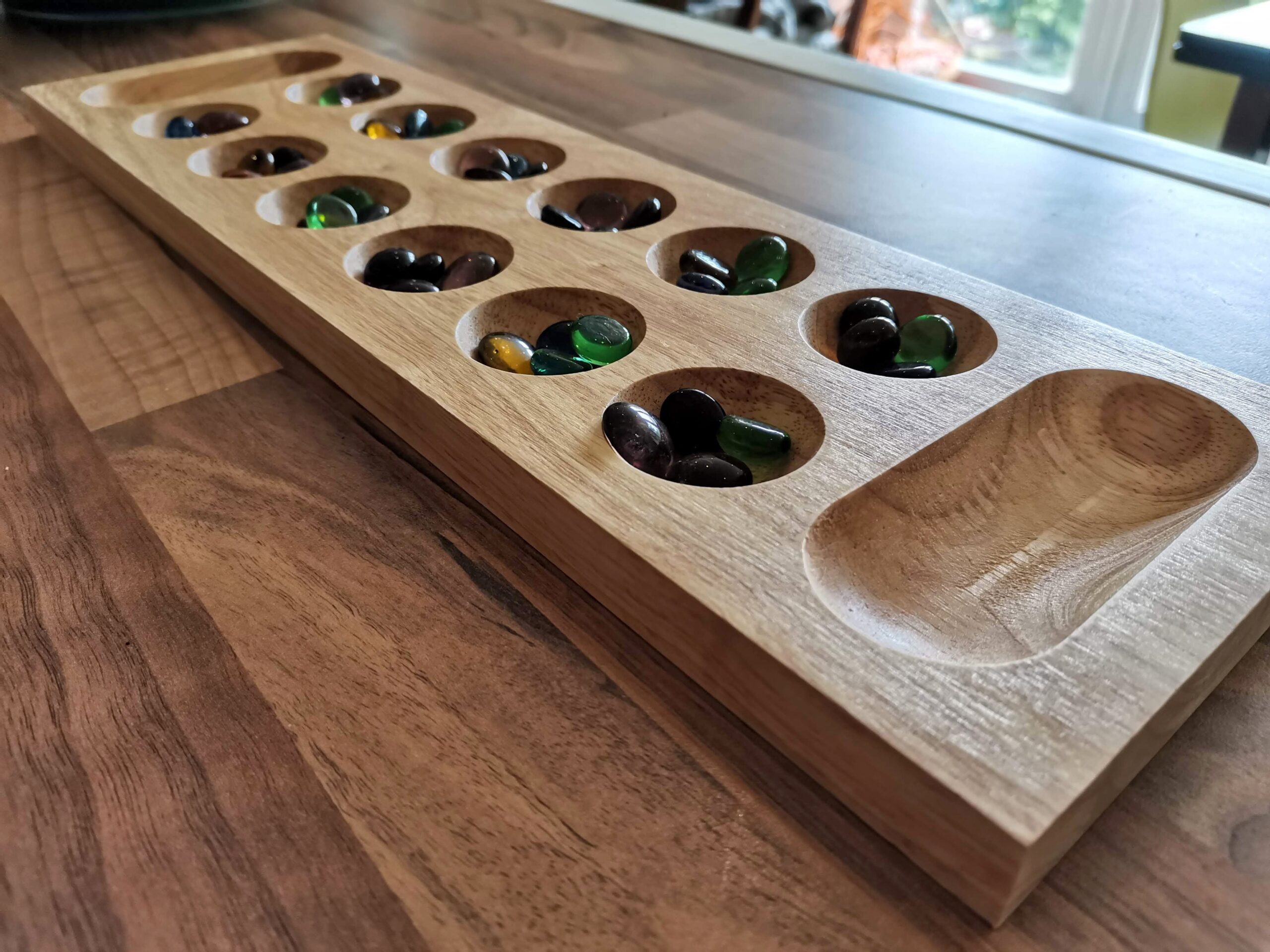Spruance Leader Review

Spruance Leader is the latest in the Leader line of games from DVG, who I’ve featured here before with their amazing game, By Stealth and Sea. You command task forces during the Cold War era, with patrols in the Atlantic and Pacific, putting real-world ships, subs, helicopters, and other vehicles and ordnance into action. The strategic action is brilliant. It’s clever, engaging, thoughtful, and a lot of fun, but there’s some thick armour that needs penetrating before you get there.
Note that Spruance Leader is my first game in the Leader series, so if anything I say sounds stupid, bear that in mind.
Tactical command
When I learned that the game would have me controlling all manner of destroyers in the North Atlantic, hunting submarines, taking down aircraft, and sinking other ships, I was expecting some kind of map in the box. Maybe a couple of oceans divided up into hexes as if by gigantic submarine bees. Not so. The main board is a tactical display which focuses on where the different vehicles are in relation to one another, and not where the conflict is taking place in the world. The maps, as such, are just representative illustrations of each campaign’s included scenario sheet. They’re only really there to give an impression of where the action’s taking place in each turn, not pinpointing it. It really conveys a feeling of something happening at the operational level.
During the game you’ll play out encounters in the North Sea, while some take you deep into the Mediterranean and Black Sea, as well as East Asian skirmishes around Japan and the Philippines. To do this you need to choose and outfit your fleet before anything else happens, and this could be a game all by itself. Every vehicle and every weapon you load onto your vehicles costs Special Option points, or SOs as the game calls them. The campaign sheet tells you how much you get to spend across your task force, and this is where you’ll spend a lot of time choosing who, and what is going into battle.
This is a good time to segue into the ship cards. They’re extremely detailed, and every time I chose a ship, I felt like I was playing a grown-up version of Top Trumps. Each vessel’s card tells you not only how much it costs, but also which weapons it can carry, and how well it can defend itself against subs, ships, and aircraft. You’ll see how noisy it is, how well it handles the stress of war, its skill level, its hull strength, and there’s even a photo of the real ship. There are two things to note here. Firstly, there’s a ton of extremely valuable information on a small card, which is great. Secondly, it’s a lot to take in and make sense of, especially when you’re learning the game.
Holy chit!
Spruance Leader was my first foray into the Leader series, and as such I didn’t really know what I was letting myself in for. I’m used to games with plenty of chits and sorting them into some kind of meaningful order, but Spruance Leader took it to a whole new level. Every ship has its own counter, as does every other vehicle. There are counters to draw for each encounter, counters for tracks, and counters for every single weapon. You’re going to need something to organise everything into, trust me on this. At least sort the ordnance if nothing else. I used one of the awesome trays from Cube4Me (this one in fact) to do just that. I can’t imagine trying to play the game without some serious organisation.

There are loads of cards too, including three double-sided cards per ship. Ships’ experience levels change throughout the game, giving them more abilities and better stats as they improve, so while you do need the cards, there’s a lot going on. Spending your SOs on these ships is where you’ll spend a lot of time when you play, and there’s a lot to choose from. The game helps to some extent, with the cards showing the year each ship was commissioned (there’s no using a 1990 destroyer in 1982), and also where it can be used, so ships destined for the Pacific can’t be used in the Atlantic campaigns. Even with these constraints, there are still many decisions to make, including not only which vehicles you want, but what experience level they begin the game at (detailed on the campaign’s sheet). Then once you finally settle on what you want, you’ve still got to choose the Commanders you want, and which weapons you’re loading. If you’re someone prone to heavy AP (analysis paralysis), Spruance Leader may well break your brain.,
Here’s the thing though. Some of you have read the above paragraphs and are pale and trembling, wondering how on Earth anyone could find that fun. Others, however, especially those of you who went looking for reviews of the game, are probably licking their lips at the prospect. There’s a certain type of person who loves the decision-making and huge variety of choices the game lays before them. Getting ready to take on a campaign takes time. It’s the equivalent of a ‘Session 0’ for a TTRPG, where you’re getting the story and the players ready to go. A prologue, if you will.
The main course
Once you’ve sorted who and what is going into battle, the game starts proper, and that’s where it shines. Roll dice, draw target cards, and fight the battles. Some areas in your campaigns have enemy task force patrols which add another level of danger, and there’s a see-saw balancing act between opting to face events and combat, and knowing when to choose a different target. Your ships accrue stress during battles, which is a bad thing, but defeating enemies reduces the chances of a difficult encounter, and removes enemy task forces from the map, which are good things. It’s the battles themselves which really define the game, however, and they’re brilliant.
You get to choose which of your ships are in the Screening force; those out in front of the Main and Protected forces. They’ll take more stress, but have increased detection and get to act first. Deciding which ships get attacked by the enemy is a simple process of adding chits to a draw cup, taking one out, and seeing who’s involved in the naval fisticuffs. Ships in the screening force have more chits in the cup, and therefore a higher chance of being drawn, which makes sense, as these guys are your first line of defence. You’ll send your helicopters off to drop sonar buoys in an attempt to detect submarines as the enemy forces inch ever closer, and the tension it creates is amazing. I love the way the board setup represents the battle, and the way the enemy vessels spread out representing both their range and their azimuthal angles. The inexorable creep of the more dangerous enemy ships leaves you with some tricky prioritisation choices to make

Attack resolution is really simple – it’s just a case of taking a base number from the attacker, applying modifiers from various effects, and seeing if that number is more damage than the defender can take. Rather than making combat anti-climactic, it merely makes it feel like the resolution of plans that were set in motion before. Spruance Leader is a game swamped in strategy and tactics, and it’s what it revels in. You start to form real bonds with the ships and commanders as they gain experience and get promoted, which makes losses feel like a punch to the stomach, while victories are truly joyful.
Final thoughts
A month or two back, I didn’t want to review this game. I’d spent well over an hour punching and sorting counters and cards, and I’d made two abortive attempts to dive into the game when I had an hour spare. Both times, I failed. There was just too much stuff. Too many rules, too many cards, too many chits. The rulebook isn’t great either, I found myself jumping back and forth between sections telling me which things I should do, and then how to do them. I tried the easy campaign in the North Atlantic and didn’t get past spending my SOs. From memory, there was something like 31 ships available to me, each with three cards, and I just had no idea what to pick, or why. It was demoralising and made me feel stupid, which I didn’t enjoy, because generally speaking I can turn my hand to games of any difficulty and understand them. Anyone with an interest in the Cold War era conflicts I’m sure would revel in the choices on offer, but I just couldn’t break through that barrier. That might be how you feel on your first play too, but don’t worry, there is a solution!
I was looking at the files section of BGG, because I wanted to print some more campaign tracking sheets (they include one in the box, but you’ll want more), and stumbled on this essential download from the game’s designer, Dean Brown, which contains not only updated rules, but also some great beginner level scenarios. These remove a couple of mechanisms from the main game, but more importantly, give you a suggested load-out of ships and commanders. After that, things went much more smoothly. I went from the deer-in-the-headlights out of my depth feeling of ignorance to understanding what does what, and how it all works, and I had an amazing time.
Spruance Leader is a brilliant game. The whole game revolves around the tactical decisions you make, and the feeling of investment in the choices you make is immense. Don’t kid yourself into thinking it’s something you’re going to play when you’ve got an hour free. The game itself may only last an hour or two at most, but the planning is something you’ll want to take your time over to get just right. If you’re a military nut with an interest in naval warfare, and don’t mind a steep learning curve, this is pretty much a must-buy, it’s as simple as that. For the rest of us, especially if you’ve never played a Leader game before, just be aware of those couple of pitfalls (sorting and organising, not downloading the beginner scenarios) and there’s a great game waiting for you too. The only downside I can see is that I’m probably going to have to buy Thunderbolt Apache Leader and Phantom Leader now.
Review copy kindly provided by DVG. Thoughts and opinions are my own.

Spruance Leader (2022)
Design: Dean Brown
Publisher: DVG
Art: Unlisted
Players: 1
Playing time: 90-180 mins













